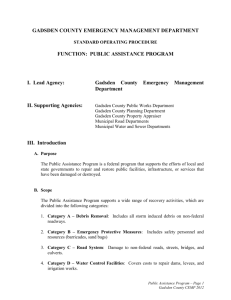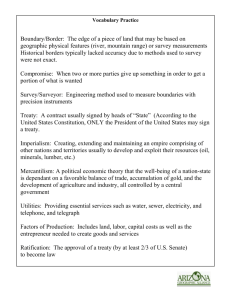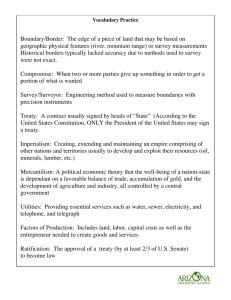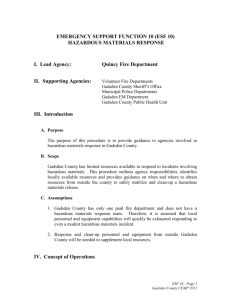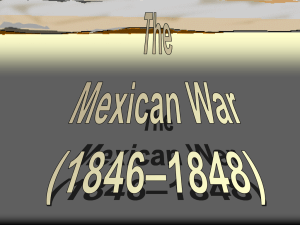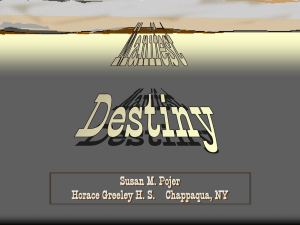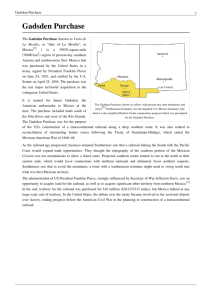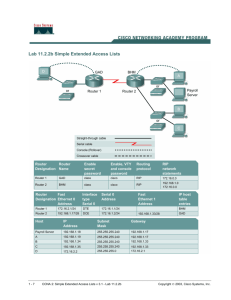Location, Location, Location - Arizona Geographic Alliance
advertisement
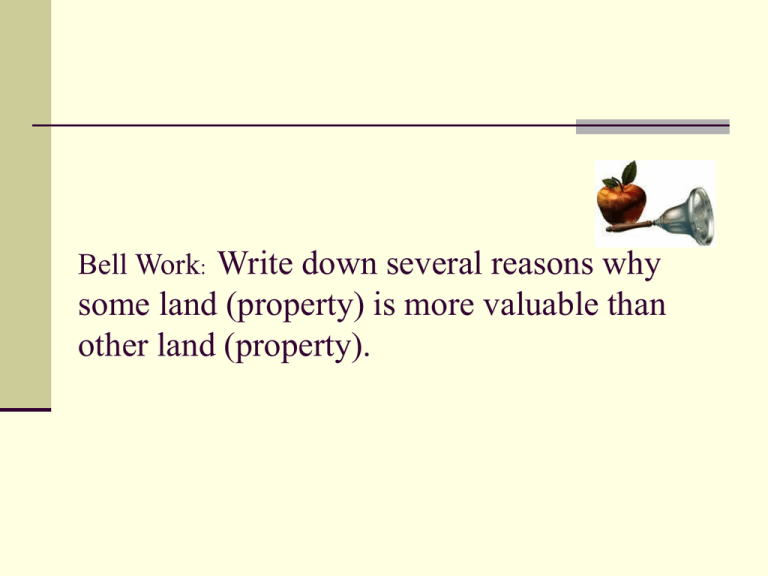
Bell Work: Write down several reasons why some land (property) is more valuable than other land (property). Bell Work: Write down several reasons why some land (property) is more valuable than other land (property). Size (Acres) Structures on property, “improvements,” amenities Resources Water Rights, wells, ponds, lakes Terrain and accessibility Soil quality Geographic Hazards (land slides, earthquakes, volcanic eruptions) Transportation Access Proximity to Shopping/Schools Utilities (Power/Sewer/Gas/Oil Lines/Water/Telephone/Cable) Commute Distance (Employment) Climate Scenic (trees, coastline, water views, mountain vistas) Distance to Landfills/Factories/Noise/Mines/Blasting/Smell Population density Essential Question: Why Acquire More Land? Essential Question: Why Acquire More Land? Profit Motive Resources Water Transportation/Ports Increase Trade Options Protection (Military) Imperialism/Mercantilism Anticipatory Set: Why would the United States want to purchase more land in the “desert” Southwest? Gadsden Purchase Vocabulary Boundary/Border Ratification Compromise Territory & Statehood Survey/Surveyor Filibuster Treaty Opportunity Cost Imperialism Cost/Benefit Analysis Mercantilism Slavery Utilities Appropriation Production Factors Dictatorship Location, Location, Location Westward Expansion: Arizona and the Gadsden Purchase Westward Expansion http://en.wikipedia.org/wiki/Territorial_acquisitions_of_the_United_States Area Events and History Manifest Destiny Mexican War (1846-1848) General Stephen W. Kearny and the U.S. Army The Mormon Battalion Treaty of Guadalupe Hidalgo ($15-million) Mexican Cession (1848) Proposed “State of Deseret” 1849 Compromise of 1850 Slavery and Southern Tensions Butterfield-Overland Stage Route 1858-1861 Chinese Labor Boundary issues and surveying errors/Inaccurate mapping Tensions, troops, and almost a 2nd Mexican War Who was James Gadsden? en.wikipedia.org Born Charleston, SC 3rd of 16 children Educated Yale (New Haven, CT) Military and Government service Railroad executive/promoter Desired a Southern transcontinental rail line for economic stimulation of the South President Franklin Pierce (also a “Southerner”) convinced about rail line Sends James Gadsden to Mexico City as an American Minister to Mexico Negotiated proposals allowing more land from Mexico to the United States Why was this area of Land Important? Land South of the Gila River relatively easy terrain. Mormon Battalion had traversed area and wrote of terrain with few mountains or deep valleys Rail line would connect Texas to California and construction would be rapid without extensive bridges, grades, tunnels and ledges to construct. Alternatives to the north were much more rigorous and construction costs would be very expensive. Water tables were deemed acceptable (water stops for steam engines were needed frequently) Construction costs would be low Importance of Railroads Develops territory = passenger/materials transport Supports/Promotes economic growth Greatly increases payload weights at considerably lower cost Spur lines connect into main lines (for mining materials) Improved passenger safety and comfort Fuels new industry: steam engines, diesel engines, Pullman cars, freight cars, service stops, etc. Increases trade and resource utilization Improves standard of living Arizona Topography Difficult terrain/grades Mild terrain/low grades http://alliance.la.asu.edu/azga/ Options Considered: (6) 1-Add large portion of the Mexican States of Coahuila, Chihuahua, Sonora, and all of Baja: 120,000 square miles for $50-million (President Pierce’s favorite) 2-Did not extend as far South and excluded Baja: $35-million 3-Similar to #1 but settled Indian claims: $30-million 4-Similar to #2 but excluded Baja and was slightly North: 20-million 5-32nd parallel allowing railroad construction and access to Gulf of California: $15-million 6-Similar to #5 but no Gulf of California access and no Indian claims compensation: $10-million Mexico’s Interest = why sell? Antonio Lopez de Santa Anna = Mexican dictator and President Cash needed = Mexico near bankruptcy Mexican Army needed money Feeling United States would take land by force anyway Settle Indian claims At the time, no known resources were evident = land was considered lacking value The “Deal” (Ratified by U.S. Congress 1854) Left Mexico with land access to Baja. U.S. Senate ratification of the Gadsden Purchase April 17th, 1854 treaty defeated by 2/3 of the Senate April 18th, 1854 Senate voted to resume debate Military protection clause added (for private railroad companies) Raised purchase price for $7-million to $10-million Congressional appropriation approval required Santa Anna upset with new treaty but he needed the cash = it would depose him as President Gadsden Purchase treaty ratified June 19th, 1854, and becomes law 1st installment of $7-million paid July 1, 1854 (Apparently, only 6-million arrived in Mexico City…$1-million was missing!) Physical Features of the Gadsden Purchase in Arizona Territory Desert Low Terrain Acceptable water table Colorado River Grasslands and scrub Rich in metal minerals Political Issues with the Gadsden Purchase Brought the issue of slavery into Westward Expansion Increased land and port access Promoted self-interest with railroad construction Offered little in known resources for such a huge cost Senate filibuster resulted in heated debates 2/3 of Senate opposed original treaty, and it was defeated by anti-slave Senators Economic Issues with the Gadsden Purchase Railroad (transcontinental) southern routes, specific to Charleston, SC and increasing slave traffic Southern states wanted more rail lines and connections, especially westward to California. Mining (copper and other precious metals) Agriculture (irrigation farming) Ranching Military Who Cares about the Gadsden Purchase? Manifest Destiny -- Last section acquired in the continental United States (added 24% land to “future” Arizona) Railroads would greatly increase development and standard of living to those in Arizona Territory through increased freight and mail volumes and improved safety and comfort of passengers as well as low cost mining materials transport by adding “spur” lines. Agricultural and ranching lands increased Access to gold, silver, copper, and other mined resources Important stronghold for military In retrospect, $10-million was a bargain! So what happened to Gadsden, anyway? 1855 Mexico demanded recall of Gadsden Remains in post until October 1856 Returned to his South Carolina plantation of which 200-300 slaves lived and worked Died December 26th, 1858 at the age of seventy. He would never witness the calamity of the U.S. Civil War The transcontinental rail line would take a central route and use Chinese labor in challenging and nearly impossible terrain finishing in 1869 at Promontory Point, Utah. It would be 27 years after his death before a southern route transcontinental rail line would be completed. Math and the Gadsden Purchase 29,640 square miles (30,000) = Much less area than all six options negotiated! 189,696,000 acres (approx. 190,000,000) $10-million dollars paid = about .19 cents/acre or about $29.64/square mile. $10-million adjusted (2008) for inflation = approximately $250-million dollars (or about $760/acre today) *Note historical sources differ regarding acreage and/or square miles possible due to the various options vs. the final survey and US Senate ratification modifications. Gadsden Purchase Trivia When the inhabitants of Arizona asked Congress for a Territorial government in 1854, one of the names suggested for the new Territory was “Gadsonia,” a Latin adaptation of the surname of James Gadsden. These people of note were born, or lived), in the area encompassing the Gadsden Purchase: Wyatt Earp - Doc Holliday - Sandra Day O'Conner - Linda Ronstadt - Gary Shandling - Paul and Linda McCartney - Tim McCoy - Alex Kellner - Ray Lindstrom - Travis Edmonson Morris Udall - William Jennings Bryant - Joe Bonanno - Rose E. Bird - Kerri Strug - Rex Allen - Cochise - Geronimo - Dennis DeConcini - Pete Licavoli - Sean Elliott - Barbara Eden - Will Rogers, Jr. - Ford Burkhart - Burt Schneider - Bonnie Henry Geraldo Rivera - Sean Elliott - Kitty Kelly - Clyde (Skip) Battin Frank Kalil - Kate Walsh - Gary Paxton

